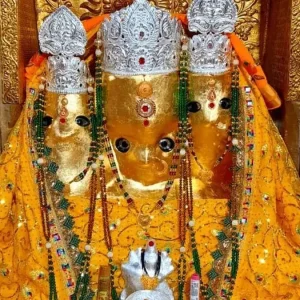The Rameshwaram Jyotirlinga is housed within the Ramanathaswamy Temple, located on Rameswaram island in the state of Tamil Nadu, India. It is one of the twelve Jyotirlinga temples, which are considered to be the most sacred abodes of Lord Shiva.
The Jyotirlinga enshrined here is the Ramanathaswamy, believed to have been established and worshipped by Lord Rama himself. The temple is also one of the Char Dham pilgrimage sites, a holy journey undertaken by devout Hindus.
Where is the Rameshwaram Jyotirlinga located?
Ramnath or Rameshwaram or Ramanathaswamy temple is located on the Rameshwaram Island in Tamil Nadu.
History of Rameshwaram Jyotirlinga
The ancient shrine is said to have been housed inside a thatched hut till the 12th century. Parakrama Bahu of Sri Lanka was said to have begun the masonry work here. The rest of the temple was built by the Setupathy rulers of Ramanathapuram.
The current structure of the temple is believed to have been built in the 17th century AD.
Several royal families from Travancore, Ramanathapuram, Mysore and Pudukkottai have patronized the temple and added to its current beauty.
Special features of Rameshwaram Temple
Rameshwaram temple is spread over 15 acres and has tall pyramidal towers (gopurams) and a huge Nandi. There are 4,000 carved granite pillars over a 4,000 feet corridor – said to be the longest in the world. Since the rock is not indigenous to the island, it makes the structure even more marvellous.
There are two lingas inside the sanctum – one built by Rama with sand (the main deity) and the other Shiva Linga brought from Mount Kailash by Hanuman – Vishwalinga.
There are 64 water bodies or tīrthas around the island of Rameshwaram, out of which 24 are considered sacred and bathing in them is believed to purge you of your sins. The main tīrtha is the Bay of Bengal called Agni Tīrtham.
There are also separate shrines for Ramanathaswamy and his consort goddess Parvathavardhini as well as shrines for Lord Vishnu, Lord Ganesha and Goddess Vishalakshi. There are also many halls in the temple such as the Setupati Mandapam, Kalyana Mandapam and Nandi Mandapam.
What is the story behind Rameshwaram Jyotirlinga?
Legend has it that Lord Rama worshipped Lord Shiva in this spot on his way back from Lanka – after defeating the demon king, Ravana. To atone for the sin of killing Ravana – a Brahmin and great Shiva devotee – Lord Rama offered prayers to Lord Shiva. Since there was no shrine for Shiva there, he sent Hanuman to Mount Kailash, Lord Shiva’s abode, to bring the linga.
However, Hanuman could not return before the auspicious time set to perform the puja, so Sita made a linga out of sand – Ramalinga that Rama worshipped. When Hanuman returned, he was disappointed that Rama had not waited for his linga. To pacify him, Rama instructed devotees to worship the linga brought by Hanuman, which he called the Vishwalinga before the Ramalinga.
Interesting facts about Rameshwaram Jyotirlinga
- The Pamban Bridge is a railway bridge on the Palk Strait which connects the town of Rameshwaram on Pamban Island to mainland India.
- According to the Ramayana, the bridge between mainland India and Sri Lanka is said to be Ram Setu Bridge that Rama built to reach Sri Lanka to rescue Sita from the clutches of Ravana. Subsequently, Ravana’s brother, Vibheeshana, the new king of Sri Lanka had asked Rama to destroy the bridge. He did this with just one end of his bow and hence the southernmost tip of the mainland in Pamban Island is called Dhanushkodi.
- Rameshwaram is one of the four main pilgrimage sites (char dham) that include Badrinath (Uttarakhand), Dwaraka, and Puri (Odisha).
- It is the southernmost jyotirlinga in India.
- While you can visit this spiritual spot at any time in the year, it would be best to visit it post monsoons and during the winter months – between October and April. Visiting this ancient and divine destination during Mahashivratri would be the ultimate treat for any devotee!







